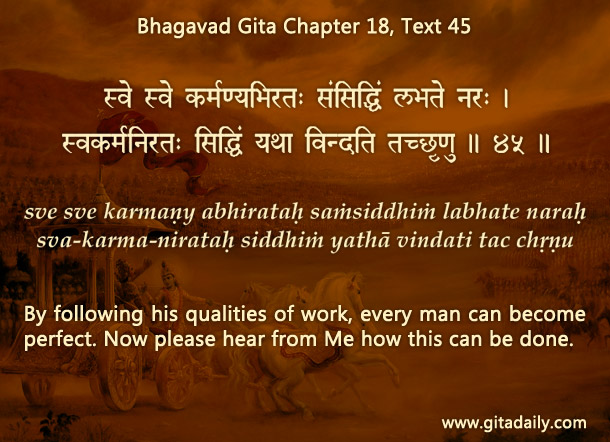In general parlance, the word ‘ego’ often refers to arrogance, but in Gita wisdom it frequently refers to our sense of self-identification – of “I am.”
False ego refers to our self-identification with that which we are not – our material body and its many related designations. True ego refers to our self-identification with what we actually are – eternal souls, parts of Krishna.
Gita wisdom helps us to philosophically understand the difference between our true ego and our false ego. Still, even if we intellectually comprehend this difference, we cannot wish away our false ego – we have to live with it lifelong as we strive to realize our true ego. Even after we take up a spiritual path for realizing our true ego, whatever psychophysical nature we have based on the orientation of our false ego still stays with us.
Significantly, the Bhagavad-gita (18.45) assures that we can attain perfection while working according to our nature. To this end, Gita wisdom offers the sociocultural arrangement of varnashrama for using our false ego in realizing our true ego. That is, it enables us to direct our bodily nature in a way that is harmonious for activating our spiritual nature. Our spiritual nature is to love and serve Krishna – and we can begin to act according to that nature by practicing bhakti-yoga in the here-and-now.
Practicing bhakti-yoga includes not just doing directly devotional activities, but also infusing all our activities with a mood of devotion. Thus, for example, if we have a brahminical nature, the Gita asks us not to give up the corresponding moral-intellectual inclinations, but to use them in a devotional mood.
When we harmonize with our material nature, we make our pursuit of self-realization easier and swifter, for we relish dharmic material satisfaction while we pursue lasting spiritual fulfillment.

Explanation of article:

Leave A Comment